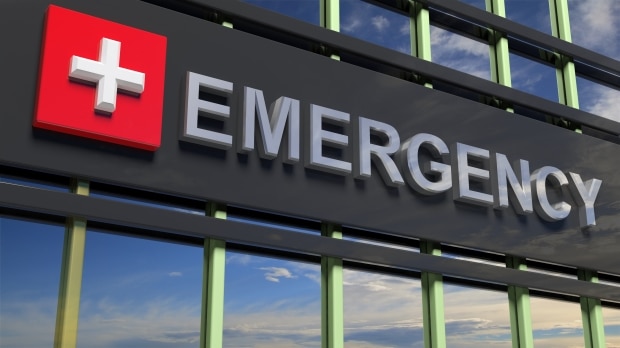When someone becomes ill or gets injured, the average person doesn’t always know what type of care they need. In high-stress moments, it can be easy to panic if you haven’t thought about it before.
Especially with conflicting feelings about healthcare and what insurance covers for different facilities, you can’t help but weigh the monetary value against the seriousness of the situation.
Odds are, at some point, you will be involved in a situation where you have to make the call. Here are some quick guidelines to fall back on when you’re not sure what to do.
Call 911 if…
the situation is life-threatening and you or someone else needs immediate medical attention. If you’re alone and experiencing acute symptoms, don’t try to drive yourself to the ER. This could risk your own life and the lives of others on the road.
- Unresponsive
- Not breathing
- Severe bleeding
- Severe chest pain
- Heart attack or stroke
Every minute counts in an emergency, so if the situation feels like it’s going from bad to worse, call the ambulance. It’s better to be safe than sorry.
Once the EMTs arrive and assess the situation, you’ll know if the ambulance ride is warranted and you can decide whether or not to use it.
Go to the Emergency Room if…
the situation is urgent, acute or life-threatening. Some symptoms that qualify are:
- Persistent chest pain or difficulty breathing
- Severe vomiting, diarrhea, or abdominal pain
- Head injury or other major trauma
- Loss of function
- Severe burns
- Heavy bleeding
- Severe allergic reaction
- Sudden, severe headache
- Altered mental status, confusion, or suicidal thoughts
- High fevers or severe dehydration, especially in children and infants
Emergency rooms are required by law to provide necessary medical care, regardless of what insurance plan you have or if you have no insurance at all. If life or limb is in jeopardy, don’t let the cost of care stop you.
But keep in mind you’re likely to have a higher copay at the hospital than urgent care or your regular physician, so don’t pop in for an everyday injury either.
Go to an Urgent Care facility if…
someone needs immediate care but the situation is not life-threatening. This includes any symptoms you might need to address outside of your primary physician’s office hours, or if the situation is urgent enough that you can’t wait for an appointment. Some applicable illnesses and injuries would be:
- Strep throat
- Bronchitis
- Urinary tract infection (UTI)
- Abdominal pain
- Minor back pain
- X-rays and lab tests
- Minor sprains and broken bones
- Minor cuts and wounds
For more in-depth information on care and costs for ER vs Urgent, click here.
Make an Appointment with your Primary Physician if…
You don’t need emergency care and can wait a day or two for an appointment. Remember your regular doctor knows your health history and medications best.
They can provide you the best and most encompassing care. See your primary physician for:
- Ear or sinus infection, or sore throat
- Fever
- Pneumonia
- Rash
- Pink eye
- Diarrhea
- Altering your medications
- Routine visits
- Persistent problems
- Certain disorders which might require monitoring
If with these new issues you need extended care, your physician can help set up additional services like home health care, counseling, physical therapy, or access to medical equipment as well.
Stay Home and Let Mom Take Care of it if…
they can heal or recover on their own given time. Sometimes you might be bothered by additional symptoms of an illness like coughing or sinus pressure.
To deal with these, you can take and follow the guidelines for a related over-the-counter (OTC) medication. Some of these illnesses may include:
- Rolled ankle
- Minor cuts
- Heat exhaustion
- Common cold or flu
There are many illnesses and injuries that simply require rest and taking it easy. If the condition begins to worsen, seek out more specialized help and ask your physician what he would recommend.
Are you looking at your children and wondering, “How did they grow up so fast?” Take advantage of their growing maturity and teach them about First Aid.
You don’t need to go into the intricate details but you can show them the basics. An emergency may arise at any time and your child may need those skills to get them through the situation.
Training doesn’t have to be boring, here are four ways you can make first aid fun for kids.






